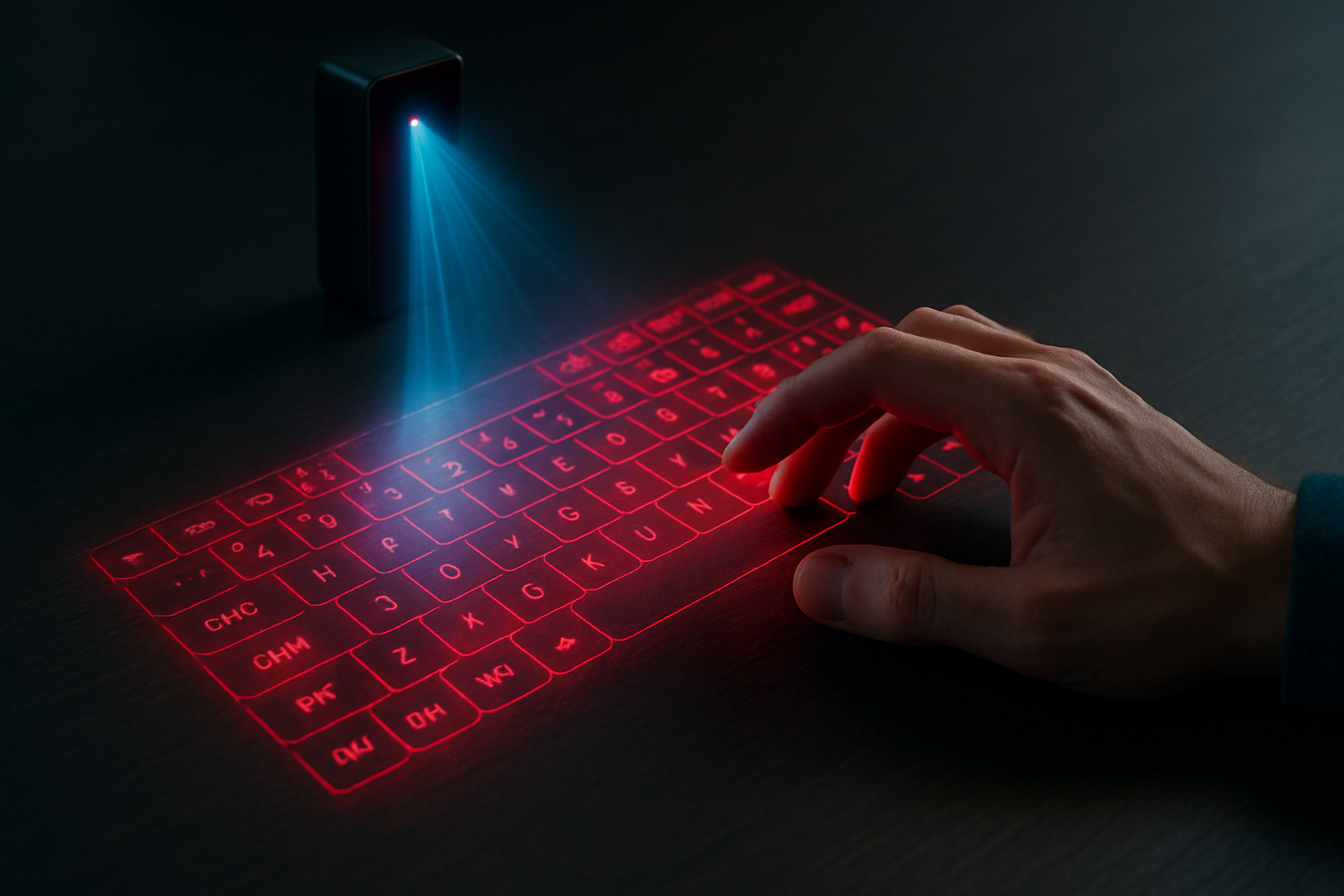Holographic Keyboards: Typing in Thin Air
In a world where technology continues to push boundaries, holographic keyboards are emerging as a futuristic solution to our typing needs. These ethereal input devices promise to revolutionize how we interact with our devices, offering a glimpse into a future where physical keyboards may become obsolete. But how do they work, and are they ready for mainstream adoption? Let's dive into the fascinating world of holographic keyboards and explore their potential to reshape our digital interactions.

Infrared sensors emit a plane of light just above the projected keyboard image. When your fingers break this plane, the system interprets it as a keystroke. Sophisticated algorithms then translate these movements into text input, allowing you to type as if you were using a physical keyboard.
A Brief History of Virtual Typing
The concept of virtual keyboards isn’t new. Early iterations date back to the 1990s, with companies experimenting with projected interfaces. However, it wasn’t until the mid-2000s that holographic keyboards began to take shape as a viable technology.
In 2002, Canesta, Inc. unveiled one of the first practical holographic keyboard prototypes. This early model used a more rudimentary projection system but laid the groundwork for future developments. Since then, advancements in laser projection, motion tracking, and AI have significantly improved the accuracy and responsiveness of holographic keyboards.
Current State of the Technology
Today’s holographic keyboards have come a long way from their early prototypes. Companies like Celluon and Serafim have released consumer-grade products that offer a glimpse into this technology’s potential. These devices typically consist of a small projector unit that can connect to smartphones, tablets, or laptops via Bluetooth.
The Celluon Epic, for instance, projects a full-sized QWERTY keyboard and can be used on virtually any flat surface. It boasts a typing speed of up to 350 characters per minute, which is comparable to many physical keyboards. However, users report a learning curve as they adjust to typing without tactile feedback.
Advantages and Limitations
Holographic keyboards offer several potential advantages over traditional input methods. They’re incredibly portable, often small enough to fit in a pocket, making them ideal for mobile work setups. They’re also hygienic, as there are no physical keys to harbor bacteria or collect dust.
However, the technology isn’t without its limitations. The lack of tactile feedback can make typing less intuitive, especially for touch typists. Additionally, bright ambient light can interfere with the projection, limiting where these keyboards can be used effectively.
The Market Impact
While still a niche product, holographic keyboards are gradually gaining traction in the tech market. Current models typically range from $100 to $200, positioning them as premium accessories rather than mainstream input devices.
The global virtual keyboard market, which includes holographic keyboards, is expected to grow at a CAGR of 24.3% from 2021 to 2026. This growth is driven by increasing demand for portable and flexible input solutions, particularly in sectors like healthcare and education where traditional keyboards may not be practical or hygienic.
Future Developments and Potential Applications
As the technology matures, we can expect to see holographic keyboards integrated into a wider range of devices. Smartphones with built-in projectors could eliminate the need for separate keyboard accessories, while augmented reality glasses might overlay virtual keyboards directly onto our field of vision.
Beyond traditional typing, holographic interfaces could revolutionize how we interact with smart home devices, vehicles, and public terminals. Imagine adjusting your car’s settings with a holographic dashboard or accessing a public kiosk without touching any surfaces.
Challenges to Overcome
Despite their potential, holographic keyboards face several hurdles before they can achieve widespread adoption. Improving accuracy and reducing latency are top priorities, as even small delays can significantly impact the user experience.
Energy efficiency is another concern. Current projector technology consumes considerable power, limiting the battery life of portable devices. Advances in low-power laser projection could help address this issue.
The Role of Haptic Feedback
One of the most promising developments in holographic keyboard technology is the integration of haptic feedback. Companies are exploring ways to provide tactile sensations without physical keys, using technologies like ultrasonic waves or air jets to create the illusion of touch.
These haptic systems could dramatically improve the typing experience on holographic keyboards, bridging the gap between virtual and physical interfaces.
A Glimpse into the Future of Input
Holographic keyboards represent a fascinating convergence of optics, sensor technology, and artificial intelligence. While they may not replace traditional keyboards overnight, they offer a tantalizing preview of how we might interact with our devices in the future.
As the technology continues to evolve, we can expect to see holographic interfaces become more precise, intuitive, and versatile. Whether typing on a desk, a wall, or thin air, the boundaries between physical and virtual input are blurring, opening up new possibilities for how we communicate and interact with our digital world.





